Angela Ackerman's Blog: Writers Helping Writers, page 68
March 2, 2021
Turn Envy into Energy
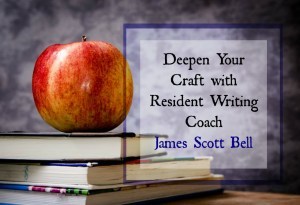
Years ago there was a commercial for Pepto-Bismol where a nerdy guy in glasses looked straight into the camera and says, “Can we talk about diarrhea?” It was an effective ad because they took the bull by the horns, as it were. They didn’t sugar coat the malady; they didn’t try to cleverly talk around it.
People get diarrhea. But they don���t like to talk about it. Sometimes, however, they have to in order to stop it.
That’s the feeling I have right now in talking to writers about a malady that may affect every one of them from time to time: envy. Can we talk about envy?
Ann Lamott has a great chapter on envy in her writing book, Bird by Bird. Here, in part, is what she says:

If you continue to write, you are probably going to have to deal with it because some wonderful, dazzling successes are going to happen for some of the most awful, angry, undeserving writers you know���people who are, in other words, not you. You are going to feel awful beyond words. You are going to have a number of days in a row where you hate everyone and don’t believe in anything . . . If you do know the author whose turn it is, he or she will inevitably say that it will be your turn next, which is what the bride always says to you at each successive wedding, while you grow older and more decayed . . . It can wreak just the tiniest bit of havoc with your self-esteem to find that you are hoping for small bad things to happen to this friend���for, say, her head to blow up.
Funny, yes; but the truth is that envy is a serious waste of time and a drain on your energy. Like any emotion, it can be a chronic condition or a momentary blip. If it is the former, you really have to do something to eradicate it. Let me suggest a few things:
1. Acknowledge your humanity and the fact that you care about what you’re doing. That’s the basic reason you feel the way you do. You’re invested in your writing emotionally, as you should be. You’re also not perfect, and don’t expect you ever will be.

2. Look at the part of your feelings that wants the other person to fail, or not enjoy success. That’s the ugly bit you’ve got to get rid of. If you have an active spiritual life, this is a good place to bring out the big guns. The Book of Proverbs, chapter 14, verse 30 says, “A heart at peace gives life to the body, but envy rots the bones.”����The ancient philosopher Epicurus wrote: ���Do not spoil what you have by desiring what you have not; remember that what you now have was once among the things you only hoped for.” Whatever practice you engage in, the great religions and philosophical views have always talked about the jewel of��contentment.��Buddha said, “Health is the greatest gift, contentment the greatest wealth.” That’s worth pursuing.
3. Write. This is always the best antidote to any writerly anxiety. Get involved in your project. Put your head down and produce the words.��Turn envy into energy and write!
4. Improve. Anyone �����anyone �����can improve their craft. You are always at a certain level, and you can with some effort get to the next level. Your competition is really only with yourself. There is joy and confidence when you see yourself improving.��
5. Prepare. Know that a pang of envy may come at any time. Before that happens, affirm your own worth and say a bit of Lawrence Block’s “A Writer’s Prayer” (from his book,��Telling Lies for Fun and Profit):
For starters, help me to avoid comparing myself to other writers. I can make a lot of trouble for myself when I do that . . .Lord, help me remember that I’m not in competition with other writers. Whether they have more or less success has nothing to do with me. They have their stories to write and I have mine. They have their way of writing them and I have mine. They have their careers and I have mine. The more focus on comparing myself with them, the less energy I am able to concentrate on making the best of myself and my own work. I wind up despairing of my ability and bitter about its fruits, and all I manage to do is sabotage myself . . .When I read a writer who does things better than I do, enable me to learn from him . . .
A hearty Amen to that.��
 James Scott BellResident Writing Coach
James Scott BellResident Writing Coach Jim is the author of the #1 bestseller for writers, Plot & Structure, and numerous thrillers, including Romeo���s Rules, Try Dying and Don’t Leave Me. His popular books on fiction craft can be found here. His thrillers have been called “heart-whamming” (Publishers Weekly) and can be browsed here. Find out more about Jim on our Resident Writing Coach page, and connect with him on
Twitter
The post Turn Envy into Energy appeared first on WRITERS HELPING WRITERS��.
February 27, 2021
Relationship Thesaurus Entry: Teacher and Student
Successful stories are driven by authentic and interesting characters, so it’s important to craft them carefully. But characters don’t usually exist in a vacuum; throughout the course of your story, they’ll live, work, play, and fight with other cast members. Some of those relationships are positive and supportive, pushing the protagonist to positive growth and helping them achieve their goals. Other relationships do exactly the opposite, derailing your character’s confidence and self-worth or they cause friction and conflict that leads to fallout and disruption. Many relationships hover somewhere in the middle. A balanced story will require a mix of these dynamics.
The purpose of this thesaurus is to encourage you to explore the kinds of relationships that might be good for your story and figure out what each might look like. Think about what a character needs (good and bad), and build a network of connections for him or her that will challenge them, showcase their innermost qualities, and bind readers to their relationship trials and triumphs.
Teacher and Student
Description: A staple in kid lit, this relationship is one that most people have experienced firsthand. But it can be current for an adult in this profession or as a backstory event for someone with the school years firmly in their rearview mirror. Some factors that could influence the dynamics of this relationship include the age of the student, individual personalities, school funding, student limitations (learning disabilities, problems at home, lack of parental involvement, etc.), and extraneous pressures on the teacher at the time (facing a chronic illness, the death of a parent, financial difficulties, etc.).
Relationship Dynamics:
Below are a wide range of dynamics that may accompany this relationship. Use the ideas that suit your story and work best for your characters to bring about and/or resolve the necessary conflict.
Showing mutual respect for each other
A teacher helping a reluctant or struggling student bloom
A student recognizing the role a teacher is playing in their own development and success
A teacher seeing beyond the student’s academic needs and taking steps to meet this needs
Struggling to teach an apathetic student
A disrespectful or hostile student resisting learning and disrupting the school environment
A teacher not knowing how to properly service a student with learning or behavioral disabilities
Trying to teach a child being hampered by over-involved, enabling or absentee parents
A student being taught by a tenured teacher who is just going through the motions
A willing learner being hampered by unmet needs (being hungry, not getting enough sleep, suffering abuse at home, etc.)
A teacher distracted by personal issues being apathetic or distant
Being taught by a teacher with unrealistic expectations
A teacher belittling or disparaging their students
A student constantly challenging a teacher’s authority
The relationship being hampered by bias or prejudice on either side
Conflicting Desires that Can Impair the Relationship
A teacher wanting to teach while a student wants to put in as little work as possible
Both the student and the teacher wanting control
A student wanting to keep a secret (a learning disability, abuse, neglect, etc.) that the teacher is determined to uncover
A teacher wanting to keep a secret (a criminal record, an affair, an unpopular ideology, etc.) that the student wants to uncover and exploit
A teacher wanting to skate through their day while the student wants attention or a challenge
One character wanting more from the relationship than the other desires (romantically, emotionally, etc.)
Clashing��Personality Trait��Combinations: Apathetic and Enthusiastic, Cruel and Timid, Disrespectful and Just, Playful and Humorless, Impulsive and Impatient, Rebellious and Controlling
Negative Outcomes of Friction
A student losing trust or respect for people in authority
A student who was punished unfairly or wasn’t believed deciding that standing up to the people in charge is a waste of time and effort
The student withdrawing emotionally and not getting the help they need
A student not succeeding academically and being limited in future endeavors
A teacher becoming disenfranchised with his or her profession
A teacher not learning from difficult experiences with a student and repeating mistakes with others in the future
The teacher losing their job
A student being suspended or expelled
Bias or prejudice being reinforced, making it harder to overcome
Fictional Scenarios That Could Turn These Characters into Allies
A competition or contest that the student’s club (sponsored by the teacher) wants to win
Getting rid of another teacher or administrator
A shared criminal endeavor, �� la Breaking Bad
An unknown that they must research and explore (a source of magic connected with the grounds, a prophecy that will destroy the school building if it comes to pass, etc.)
Inequity or unethical behavior in the school environment that they choose to fight together
Freeing the student from a toxic relationship
Exacting revenge against someone who wronged the teacher
Ways This Relationship��May��Lead to Positive Growth
A teacher reaching a struggling student and gaining confidence in his or her own abilities
Success with a difficult student revitalizing a teacher’s belief in their profession
A teacher seeing the problems in her school or district and taking steps to make things better
A student learning something that alters their perspective (realizing they’re not stupid, that they’re good at reading, math can be fun, teachers aren’t the enemy, etc.)
A student being inspired by a teacher to pursue a certain career, scholarship opportunity, etc.
The student being able to help other students with the knowledge they’ve gained
Themes and Symbols��That Can Be Explored through This Relationship
A Quest for Knowledge, Coming of Age, Crossroads, Inflexibility, Innocence, Journeys, Knowledge, Obstacles, Perseverance, Rebellion, Refuge, Rite of Passage
Other Relationship Thesaurus entries can be found here .
Need More Descriptive Help?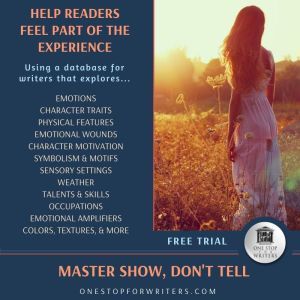
While this thesaurus is still being developed, the rest of our descriptive collection (15 unique thesauri and growing) is accessible through the One Stop for Writers THESAURUS database.
If you like, swing by and check out the video walkthrough, and then give our Free Trial a spin.
The post Relationship Thesaurus Entry: Teacher and Student appeared first on WRITERS HELPING WRITERS��.
February 25, 2021
Why Should You Join a Writing Community?
Writing is hard, but it can be easier if you’re not doing it alone. Eileen Cook is here to share 5 reasons why you should join a group.
Writing may be a solo journey, but a writing community can make it a road trip.

Writing is a solitary pursuit. You set off, a lone writer on a story journey armed only with your creativity and imaginary friends. Unless you’re co-writing your book, you’re solely responsible for getting words on the page, which can be freeing.
However, there are many benefits to being a part of a group that supports you, challenges you to be better, and helps take your writing to the next level. And besides, a road trip with friends is always more fun.
Here are five reasons to expand your writing community to include more than just imaginary friends.
EncouragementThis comes as a shock to no one: writing and publishing are hard. There’s
lots of rejection. At some point, most writers consider giving the whole thing up and spending their time doing anything (including repeatedly hitting their head on the desk) that seems more productive.
A writing community has your back when things get tough. They remind you that you’re not
alone. Sharing our difficulties makes those hard times easier to manage. Plus, when it’s time to celebrate, there’s a group ready and excited to join in.
You can’t know everything. Not only is it impossible, but even trying eats up all your free time that could be spent binge-watching Netflix. A strong community provides access to writers with a variety of interests and knowledge that can assist you.
My community is at the Creative Academy for Writers, and I’m amazed at the range of members there���from an Olympic athlete to those who work in law enforcement and everyone in between. Having contacts for subject-specific information can be a benefit to any writer.
Experts suggest that if you want to work out more frequently, try having a “gym buddy.” You’re much more likely to drag yourself out of bed if someone is expecting you. A community offers opportunities to build strong writing habits and helps hold you accountable to your expressed goals and targets.

Daily writing sprints with your buddies can get the creative juices flowing or get you started on your daily word count goal. Retreats or workshops where members plan novels, establish goals, or draft their stories together provide opportunities for members to encourage each other toward their objectives and brainstorm solutions to problems as they arise.
Reality ChecksOne of the best things about being a creative person is having a wild imagination. One downside about being a creative person is having a wild imagination.
Sometimes we use that creativity for good; other times, we use it to generate conspiracy
theories, second guessing, and doubt. A writing community can check your reactions and offer guidance. Do you reach out to the agent who hasn’t responded to your query to make sure they received it? Should you respond to a bad review or let it go? A community can help you sort these things out.
Publishing is a complicated, ever-changing business. A community of people at all different stages of the journey provides you with opportunities to learn from those with more experience or someone who took a different path. If you’re the veteran, interacting with newbies can remind you of your passion and jump start your excitement.
Interested in joining a writing community? Poke around. Whether you need critiques, a group that caters to a specific genre, or an online/in-person gang, the right fit is out
there.��To get you started,��here’s a list of communities. And check out��The Creative Academy for Writers! Membership is free, and I’d love to see you there.

Eileen Cook is a multi-published, award winning author with her novels appearing in nine languages. Her books have been optioned for film and TV. She spent most of her teen years wishing she were someone else or somewhere else, which is great training for a writer. She���s an instructor/mentor with The Creative Academy for Writers and Simon Fraser University Writer���s Studio Program where she loves helping other writers tell their unique story. Her most recent novel is You Owe Me a Murder, and her non-fiction title Full Time Author, written with Crystal Hunt, came out in January of 2021.
Eileen lives in Vancouver with two very naughty dogs.
The post Why Should You Join a Writing Community? appeared first on WRITERS HELPING WRITERS��.
February 23, 2021
Critiques 4 U!
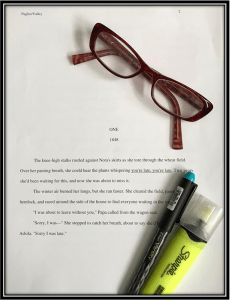
Happy February, everyone! Angela and I are hard at work doing all the things, as I’m sure you all are, too. We’re hoping that you’re finding time to dedicate to your writing. If so, you might have a first page that could use some extra love, and I’m just the person to give it ;).
If you���re working on a first page (in any genre except erotica) and would like some objective feedback, please leave a comment. Any comment :). As long as the email address associated with your WordPress account/comment profile is up-to-date, I���ll be able to contact you if your first page is chosen. Just please know that if I���m unable to get in touch with you through that address, you���ll have to forfeit your win.
Two caveats:
 Please be sure your first page is ready to go so I can critique it before next month���s contest rolls around. If it needs some work and you won���t be able to get it to me right away, let me ask that you plan on entering the next contest, once any necessary tweaking has been taken care of.
Please be sure your first page is ready to go so I can critique it before next month���s contest rolls around. If it needs some work and you won���t be able to get it to me right away, let me ask that you plan on entering the next contest, once any necessary tweaking has been taken care of.
 I���d like to be able to use portions of winning submissions as illustrations in an upcoming presentation on first pages. By entering the Critiques 4 U contest, you���ll be granting permission for me to use small writing samples only (no author names or book titles).
I���d like to be able to use portions of winning submissions as illustrations in an upcoming presentation on first pages. By entering the Critiques 4 U contest, you���ll be granting permission for me to use small writing samples only (no author names or book titles).
Three commenters��� names will be randomly drawn and posted tomorrow morning. If you win, you can email me your first page and I���ll offer my feedback.
We run this contest on a monthly basis, so if you���d like to be notified when the next opportunity comes around, consider subscribing to our blog (see the left-hand sidebar).
Best of luck!
The post Critiques 4 U! appeared first on WRITERS HELPING WRITERS��.
February 20, 2021
Relationship Thesaurus Entry: Business Partners
Successful stories are driven by authentic and interesting characters, so it’s important to craft them carefully. But characters don’t usually exist in a vacuum; throughout the course of your story, they’ll live, work, play, and fight with other cast members. Some of those relationships are positive and supportive, pushing the protagonist to positive growth and helping them achieve their goals. Other relationships do exactly the opposite, derailing your character’s confidence and self-worth or they cause friction and conflict that leads to fallout and disruption. Many relationships hover somewhere in the middle. A balanced story will require a mix of these dynamics.
The purpose of this thesaurus is to encourage you to explore the kinds of relationships that might be good for your story and figure out what each might look like. Think about what a character needs (good and bad), and build a network of connections for him or her that will challenge them, showcase their innermost qualities, and bind readers to their relationship trials and triumphs.
 Business Partners
Business PartnersDescription: Growing complexity results in an increased potential for conflict. Such is the case when people enter into partnership to share ownership of a business. So many factors play into relationship dynamics for business partners, and they all should be considered to get a clear idea of how the characters will get along. How many partners are there? Are they sharing a physical space or do they meet online? Do their personalities gel or clash? Were they friends before joining forces or is it purely a professional relationship? Digging into their backstories will not only help you know each character, it will allow you define the ins and outs of the relationship itself.
Relationship Dynamics:
Below are a wide range of dynamics that may accompany this relationship. Use the ideas that suit your story and work best for your characters to bring about and/or resolve the necessary conflict.
Acknowledging each person’s strengths and building roles based on them
Pitching in and doing the dirty work when it’s necessary (taking on a job the character doesn’t enjoy, filling a gap even though it’s not an area of strength, etc.)
Showing mutual respect
Having realistic expectations for the other person
Communicating clearly about concerns or problem areas
Making personal sacrifices to make the business a priority
Being transparent with each other
Respecting personal boundaries
Being honest about how the business is really doing
Respectfully calling each other out when someone has dropped the ball or needs a kick in the pants
Taking time to get to know each other personally
Being satisfied with the status quo; not seeking growth or change
Each partner doing their own thing rather than working together
Clashing personality traits causing problems
Taking advantage of a partner’s weakness
Not disclosing information that makes one look bad
Competing with the partner instead of working alongside them
Ego getting in the way of what’s best for the business
Personal feelings or shared history making it difficult to work together
Partners having different goals for the business
Differing ethics between partners
Conflicting Desires that Can Impair the Relationship
Partners with different goals for the company (one wanting to grow the company to sell it while the other wants to create a legacy by building it as big as it can be)
One partner wanting a romantic relationship while the other doesn’t
One partner being invested in quality while the other is more interested in doing as little as possible to get the job done
Partners who prioritize the business differently in their lives
Partners with different morals or values that make it hard for them to agree on some things
One partner wanting to resolve conflict while the others seeks to avoid it.
Clashing Personality Trait Combinations: Needy and Independent, Cynical and Optimistic, Dishonest and Honorable, Disorganized and Fussy, Flaky and Sensible, Workaholic and Lazy
Negative Outcomes of Friction
Decreased communication, which only magnifies existing problems
Internal frustration leading to overt fighting between partners
Discord creating an unpleasant or toxic culture for employees
Dissatisfaction or lack of success stealing a partner’s joy and making the job a drudgery
Partners internalizing failure, increasing feelings of insecurity and decreasing self-worth
A partner burning out
Difficulties at home (arising from financial strain or a partner’s inability to leave work at work)
Partners not making enough money to meet their personal needs or pay employees
The business falling apart
Fictional Scenarios That Could Turn These Characters into Allies
Coming together to fight a threat to the business (a growing rival in the industry, a lawsuit, being blackballed, etc.)
A personal disaster that encourages a closer relationship outside of the business
Joining forces to oust another partner
A facilities issue that pushes the partners into closer quarters, forcing them to get along
Fighting for a common interest outside of work (working together in a volunteer capacity, fighting for justice in their community, etc.)
Ways This Relationship May Lead to Positive Growth
Being inspired by a partner (to pursue education to improve in an area of weakness, to strive for a better work-life balance, etc.)
Being pushed by a partner to move past complacency and take healthy risks for the business
A partner realizing that they can’t do it all on their own
A partner learning to respect personal differences instead of disdaining them
Gaining confidence through success
Learning from a difficult partner what not to do in business relationships
Themes and Symbols That Can Be Explored through This Relationship
A Quest for Knowledge, Betrayal, Crossroads, Greed, Inflexibility, Instability, Isolation, Loss, Perseverance, Pride, Recognition, Sacrifice, Stagnation, Teamwork
Other Relationship Thesaurus entries can be found here .
 Need More Descriptive Help?
Need More Descriptive Help?While this thesaurus is still being developed, the rest of our descriptive collection (15 unique thesauri and growing) is accessible through the One Stop for Writers THESAURUS database.
If you like, swing by and check out the video walkthrough, and then give our Free Trial a spin.
The post Relationship Thesaurus Entry: Business Partners appeared first on WRITERS HELPING WRITERS��.
February 18, 2021
Story Resolutions: Mastering the Happy-Sad Ending
Very often, it’s the ending of a story that sticks with us���because it’s our last memory of it, our most recent emotional connection. So nailing the ending is important. This is why I was so excited when Gilbert Bassey reached out with a post idea about a satisfying story resolution that isn’t discussed much. Purely happy or sad endings don’t always provide a solid emotional punch. But combine the two, and you’ve got a resolution that readers just might be thinking about long after they’ve turned the final page.
It was 10pm, and I was trying to sleep when my door flew open and my sister came in, wailing like a wounded puppy. ���Why did you kill him?���
I cleared the sleep from my eyes. ���What the hell are you talking about?���
���Michael! You killed Michael!���

At that, I couldn���t help myself from laughing. Not a nice thing, I know.
Curiously, she went ahead to profess love for the story���particularly the ending that made her cry. Fascinating, right? My story was able to create such a strong emotional reaction because it avoided the safety of a happy ending and the depression of a sad ending. Instead, it opted for the more fulfilling happy-sad resolution.��
Why Happy-Sad Endings?Before we answer the question of why, let���s explore the story endings that we commonly see. To put it bluntly,
A sad ending is when the story ends on an overwhelmingly negative emotion��A happy ending is when the story ends on an overwhelmingly positive emotion��In both instances, it���s clear what the final emotional beat of the story is. However, the third type of ending introduces a new kind of experience.��
In a happy-sad ending, the story ends on two opposite emotional beats, making it harder to pick one over the other and leaving the audience in a happy-sad state. The Fault in Our Stars��by John Green is a perfect example. I wept like a child and I loved every bit of it.��
One reason these endings work is because they seem closer to real life than happy or sad ones. Life rarely has happily ever afters. There���s always a price to pay, and many times, the sacrifice is unexpected. When a story is able to reflect this familiar experience, it gains an extra philosophical depth.��
Secondly, if one emotion creates a desired effect, two will multiply that effect. Story is about emotional manipulation, and what is a grander act of manipulation than getting the audience to feel more than one emotion?
The Secret to Creating a Happy-Sad EndingWhile working on the story that made my sister cry, I knew from the beginning that I wanted the ending to be sad. But that���s not what happened, thanks to the advice I got from a writer friend at work.
One day at the office, I narrated my story to him. His response? Even a sad ending should give the audience something positive.
It was an epiphany that slapped me into a new story consciousness. I took his advice to heart and reshaped my story.��After some tinkering, I stumbled onto a secret for creating this emotionally complex story resolution: For the happy-sad ending to work, the two emotions should be tied to each other in one sequence of cause and effect. In other words, one should not be possible without the other.��
Let���s return to the resolution for the Fault In Our Stars. It���s sad because August dies, but it���s happy because his death helps Hazel appreciate her life more. Because of him���and specifically his death���she���s able to grow.
To state the secret in the clearest terms: Let the sad lead to the happy (or vice versa). There are a few ways to make this happen:
1. The Character Deliberately Sacrifices the Goal So They Can Attain Something More Important
In this ending, the character decides to let go of their goal to gain something better. For this to work, the goal has to be vital to the character. The more we feel it���s important to the character, the sadder we will feel when they let it go for something else.��
We see this in the movie��Rainman. Charlie Babbitt spends most of the story holding his estranged brother hostage to protest his lost inheritance. But as Charlie gets to know his brother, he comes to care for Raymond and realizes that he has value. In the end, he gives up his claim to the inheritance in favor of a relationship with his brother.
2. The Character Fails in Achieving Their Goal, But They Do Attain GrowthIn this instance, the character doesn���t get the luxury of choosing to let go of his goal; he simply is unable to attain it. Again, for this ending to work, the goal has to be very important, and the lesson learned or character growth has to arc towards the positive.��
A good example is��Your Name Engraved Herein��on Netflix. Protagonist Jai-Han doesn���t get the relationship he was seeking, but he learns how to deal with not getting what he wants.
3. The Character��Is Only Partially SuccessfulWith this ending, the protagonist is successful���kind of. They mostly get what they want, but it’s only a partial victory. So they win, but they also lose.
In A Few Good Men, Daniel Kaffee exonerates his clients of two of the charges against them and keeps them out of jail, but they’re found guilty of Behavior Unbecoming an Officer and are dishonorably discharged. This is a major victory, because Kaffee himself had doubts about his ability to save them from spending the rest of their lives in prison. But as men who value honor and integrity���men who have dedicated their lives to the Marine Corps���being banished from it due to their poor choices is a huge blow. Viewers are left feeling mostly happy but still a bit sad that Kaffee couldn’t deliver the whole package.
(PSST! Head over to One Stop for Writers to see Angela and Becca’s breakdown of the plot line for A Few Good Men.)
4. The Character Gets What They Want But They Lose Something Vital
In this instance, the character gets what he wants but loses something or someone emotionally valuable. If we experience victory and loss at the same time, the ending is made much more compelling.
We see this in the fifth installment of the Harry Potter series when Harry finally obtains the prophecy he���s been seeking, but in the ensuing battle, he loses Sirius.
5. The Character Sacrifices Himself to Gain Victory for Good��In this instance, the character sacrifices themselves so that a greater good can win out in the end. An example is Endgame, where Tony Stark sacrifices himself so that the universe can defeat Thanos.
ConclusionOne of the most important parts of your story is the ending. How you handle it will determine how much people love or hate what you���ve written. A happy resolution may work fine, but consider harnessing the power of two opposite emotions with a happy-sad ending.��
What stories or books have you read with this kind of story resolution?

Gilbert Bassey is a writer, filmmaker, and story consultant dedicated to telling great stories and helping other writers do the same. Subscribe to his Storycraft newsletter and��get a free copy of the happy-sad ending builder.��
The post Story Resolutions: Mastering the Happy-Sad Ending appeared first on WRITERS HELPING WRITERS��.
February 16, 2021
Identifying Your Reader
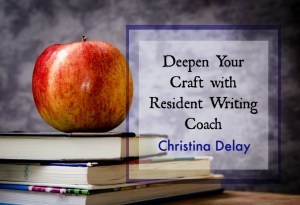
One key factor to any marketing strategy���s success is knowing who your audience is, and yet, this tends to be the main ingredient many of my author clients miss from their marketing process.
In my other life, I run the digital marketing department of a creative firm, and I have a number of Facebook Ads author clients. The main difference between my business clients and my author clients? My business clients tend to know exactly who their customers are, thanks to face-to-face interactions.
My author clients sometimes have an idea of who reads their books, but more often than not, they either
don���t have a clue, think they have a clue but are actually way off base, or they���ve pigeonholed their core audience and are missing other potential groups of readers.The most successful of my clients know their readers.
 They know if their readers are into book clubs or online gaming. They know if they are coffee or tea drinkers. They know if their readers work nine to five, if they stay at home, or if they���re retired. They know if their readers are weekend buyers, weekday buyers, or paycheck buyers, and if they read most during the week, at night, or on weekends.
They know if their readers are into book clubs or online gaming. They know if they are coffee or tea drinkers. They know if their readers work nine to five, if they stay at home, or if they���re retired. They know if their readers are weekend buyers, weekday buyers, or paycheck buyers, and if they read most during the week, at night, or on weekends.And because they know these things, they are able to get very specific with their advertising, communication, and social media engagement���both from a targeting perspective and a messaging perspective, which drives costs down, expands reach, makes the ad budget stretch further, drives more organic sales, builds a more authentic relationship, and leads to a bigger bottom line.
So how do you go from being an author who guesses to an author who knows?
And then, how do you define your reader with real data when you only have a book or two out?
Let���s find out…
The Important BitsThe first thing we need is to understand the information we want to discover about our readers. If they love pretzels with salt versus unsalted pretzels, that doesn���t really help us out much (unless we write cozy pretzel mysteries). However, understanding that our readers are visually driven and love crafting can lead us to spend more time on Pinterest and Instagram.
What we need is information we can relate to our books that also furthers our relationship with our reader.
I think that���s really important, so I���ll say it again.
Focus on discovering the information you can relate to your books that also furthers your relationship with your readers.
First, let���s make sure we understand the places we digitally connect with our readers.
Digital Reader Connection PointsHere is a quick list of the typical reader connection points we have available at our fingertips:
Author NewsletterAuthor WebsiteAuthor Pages on Social Media (Facebook, Twitter, Instagram, etc)Reader Communities such as Goodreads and Facebook GroupsYouTube ChannelHowever this list can stretch on as much as you are willing to experiment. Reddit, TikTok, Slack, Zoom, and other sites and platforms have all recently seen an increase in author/reader engagement.
Okay, we got that down! Now, let���s see what we need to learn from these connection points in order to build a true understanding of our readers.
Reader DiscoveryThe below data list can help you identify which portion of these particular individuals are most interested in what you have to offer.
Age rangesGenderMost active days and times onlineCommon interestsDevice type (Mobile vs Tablet vs Computer)Device platform (Android vs Apple)Preferred image types (soft vs shocking, bold vs abstract)Primary communication method (text, photos, videos)What we want to keep in mind through this is that our reader is not just a 35+ female who commutes to her nine-to-five and therefore only has time to read on weekends. Our reader is a busy woman who is employed full time. She may have a family, she may take care of her elderly parents, she may run a dog rescue on the side.
My point is, it would be a very big mistake to only think about our readers as a set of data points. These pieces of information are meant to give us a peek into who our reader is, and allow us to meet her where is most comfortable and convenient for her.
By narrowing down that sweet spot for our readers, we are also able to employ the 80/20 rule (the Pareto Principle) and save ourselves valuable time, money, and effort. Eighty percent of our return tends to come from twenty percent of our effort.
Discovery ToolsThe wonderful thing about these tools is that most of them have no barrier to entry���meaning, you don���t need a huge back list or a big budget to make them work.
Analytics
Perhaps the best starting point for figuring out who reads our books and interacts with our content (blog posts, social posts, etc) is to enable analytics on our author website.
Analytics allows us to see a detailed profile of the visitors of our website. Most analytics platforms will show us our most popular content and pages, how long visitors stay on our site, and how many visitors we have over a given period of time.
Drill down further, and we can typically find the age ranges, gender, most active days and times on our site, and the device type and platform used.
If we have a good bounce rate (under 55%), we can trust that the data we���re showing for our most engaged demographic is valid. If we have a high bounce rate (over 55%), something���s off with the content on our site or with how people are finding our site, because a high bounce rate indicates that the viewer is not finding the information they expected to find.
The most well-known analytics platform is Google Analytics, and you or your web designer can set up access with a few steps.
Analytics are just one piece of our reader puzzle. If you have an active website that you update regularly, website analytics can be a valuable discovery tool.
Facebook Pixel and Google TagAnother great tool that is also free to use is called pixels, or tags. It���s a little bit of code you embed on your site that collects user data (nothing personal or specific to the individual) so you can get a snapshot of the type of person who is interacting with your site.
My personal favorite is Google���s tag, as it allows you to not only collect data, but it also shows you what other things the majority of users who visit your site are interested in.
For example, Google may clue you in that many of the visitors to your site are also really interested in DIY projects and country music. Can you use that information to better relate to your readers? Uh, why yes. Yes you can. To great effect. (Caveat: you must have enough visitors to generate this information, generally 1,000+ over a time period that you set. I like setting it up for anyone who has visited my site for the past 365 days.)
Facebook���s pixel also has its own analytics, though not near as robust as Google���s. If you already have a Facebook pixel set up (maybe you did it forever ago), the analytics for the pixel reside in a new place (thanks, new Facebook). After enough visitors come to your Facebook page and website, you���ll be able to see your most engaging posts, basic demographics, and most active times.
Again, this is something you may need a web designer���s help with as it does involve installing some code on your site, but once you get that done, you are free to use the information to build a colorful reader profile.
Email PlatformsI���ve saved these final two discovery tools for last, because they are paid tools. If you don���t have the budget for the paid email plan or pay-per-click advertising, bookmark this post and come back when you can implement them.
Many email platforms have audience data that they will provide to you on their upgraded plans. Sure, it’s your email list, but the benefit of this data is that the platform can tell you which demographic is the most engaged with your email content.
So even if you know that your key 35+ working mom reader reads your books and content only on weekends, you may not know that your 65+ retired ladies are the ones who actually click on your newsletter content, respond to your emails, and share your emails and book news, hence giving you more options to connect with your readers in new ways.
Paid AdvertisingOne of the best ways to build a reader profile is to do so through audience testing in paid advertising. My favorites are Facebook and Google. As Google tends to be less cost-effective for lower priced items, I���ll just say that by using the specific user data you���ve collected, you can run some very effective advertising.
We���ve already covered a bit of what Facebook analytics can do for understanding your reader. Audience testing takes analytics even further.
Say you���ve discovered that your most engaged demographic is our 35+ working moms who love coffee, country music, and DIY projects. When you set up your Facebook audience for your ads, you���ll use those data points to create a very specific audience.
But it doesn���t stop there.
Once you���ve created that very specific audience, your ad creative makes the connection to that audience – perhaps appealing to the independent resourcefulness of DIYers or using imagery that connects with coffee lovers and country music fans. Perhaps you���ve discovered that your audience is most active from 6am to 8am, from 11am to 1pm, and from 5pm to 8pm on weeknights (which makes sense if they take public transportation into work). You can then schedule your ads to run during the hours in which your audience is most engaged, spread your budget out, reduce your overall ad cost, and on the whole, run a very successful ad campaign.
Whew. That was a lot. Thanks for sticking with me. It may seem daunting, but once you do the work to build your reader profile using actual data from your author assets, it will benefit your career for years to come.
 Christina DelayResident Writing Coach
Christina DelayResident Writing CoachChristina is the hostess of Cruising Writers and an award-winning psychological suspense author. She also writes award-winning supernatural suspense under the name Kris Faryn. You can find Kris at: Bookbub �� Facebook �� Amazon �� Instagram.
Finding Your Ideal Audience (Jane Friedman)
5 Author Tips for Building a Fan Base (Write Now Coach)
The F.A.R. Marketing Method (Write Now Coach)
The post Identifying Your Reader appeared first on WRITERS HELPING WRITERS��.
February 13, 2021
Relationship Thesaurus Entry: Exes
Successful stories are driven by authentic and interesting characters, so it’s important to craft them carefully. But characters don’t usually exist in a vacuum; throughout the course of your story, they’ll live, work, play, and fight with other cast members. Some of those relationships are positive and supportive, pushing the protagonist to positive growth and helping them achieve their goals. Other relationships do exactly the opposite, derailing your character’s confidence and self-worth or they cause friction and conflict that leads to fallout and disruption. Many relationships hover somewhere in the middle. A balanced story will require a mix of these dynamics.
The purpose of this thesaurus is to encourage you to explore the kinds of relationships that might be good for your story and figure out what each might look like. Think about what a character needs (good and bad), and build a network of connections for him or her that will challenge them, showcase their innermost qualities, and bind readers to their relationship trials and triumphs.

Description: There are very few people in this world who don’t have a romantic ex or two (or five?). When it comes to our characters, certain factors will impact the dynamics of this relationship and should be considered. Is the ex a spouse, lover, or boyfriend/girlfriend? How long did the relationship last? Are there shared responsibilities that keep the ex involved in the protagonist’s life? Has the ex moved on, bringing new personalities into the mix that could create issues for the character? Was there abuse, infidelity, or another damaging event that would cause more than the usual bad feelings? Whatever the factors, this relationship will bring with it emotional baggage and inherent conflict, making it a good one for our fictional characters.
Relationship Dynamics:
Below are a wide range of dynamics that may accompany this relationship. Use the ideas that suit your story and work best for your characters to bring about and/or resolve the necessary conflict.
Remaining friends after the breakup
Spending holidays or vacations together to maintain stability for the children
Continuing to cohabitate after the breakup (to save money, until a new job or apartment can be found, etc.)
Maintaining a civil relationship because of a shared goal (raising a child, owning a business together, etc.)
Agreeing to make certain important decisions together, such as when a child should get a phone or start dating
Putting on a happy face and hiding the negative emotions that crop up when the ex is present
Ignoring each other when the two people come in contact
Being dependent on the ex (pining after them, responding to every overture of reconciliation, continuing to seek them out for help, becoming obsessed, etc.)
Refusing to be in the same room together
An inability to be together without fighting
Forcing friends and family to choose sides and cut ties with the ex
Using people and circumstances to punish the ex (by seeking custody of the children, withholding alimony payments, etc.)
Running down the ex to friends or children
Actively sabotaging the ex
Conflicting Desires that Can Impair the Relationship
One person wanting to reconcile while the other is determined to stay apart
Differing desires surrounding a shared goal or asset
One person adopting a live-and-let-live mentality while the other wants to exact revenge
One person still wanting to control the other
One person wanting to reveal the truth about their relationship while the other wants to keep certain things hidden
One’s ex wanting to move far away with the kids
One person harboring feelings for an ex who wants to remarry or date someone else
Both people pursuing the same job, home, seat on a board, etc.
Clashing��Personality Trait��Combinations:
Apathetic and Passionate, Controlling and Timid, Needy and Independent, Honest and Evasive, Forgetful and Meticulous, Impulsive and Sensible
Negative Outcomes of Friction
A relationship getting so bad that the two can’t be in the same room
Missing out on opportunities because friends have to choose one person over the other (not being invited to a wedding, etc.)
Bitterness, anger, and an inability to forgive making it hard for the character to move on
Reluctance to move into new romantic relationships
Losing the moral high ground���e.g., the breakup may not have been the character’s fault, but the way they respond in the aftermath drops them to the ex’s level
Losing family and friends over the breakup
Children seeing the way their parents fight and modeling those behaviors
Losing something else that’s important (a pet, custody of the children, one’s home, etc.) because the character couldn’t behave civilly
Fictional Scenarios That Could Turn These Characters into Allies
A child’s rebellion or unhealthy coping practices (drug abuse, unsafe sexual practices, self-harming, toxic relationships, etc.) requiring an intervention or rescue
Recognizing that a truce must be negotiated for the sake of the children
A financial difficulty that would be solved by them continuing to live together
A business opportunity that is perfect for both of them as a team
A post-apocalyptic scenario that, for survival to be achieved, requires the teamwork of both parties
Ways This Relationship��May��Lead to Positive Growth
The character realizes the part they played in the breakup and take steps to change
With distance and perspective, the character is able to see the ex for who they really are and recognize that the breakup was the right choice
The character learns to control their impulses and desires to maintain a respectful relationship for the benefit of the children
The character’s need for advice and support in the aftermath pushes them to reconcile with an estranged relative or friend
Being freed from a toxic person enables the character to pursue their true dreams and goals
Themes and Symbols��That Can Be Explored through This Relationship
A Fall from Grace, Beginnings, Betrayal, Borders, Depression, Endings, Family, Freedom, Hope, Journeys, Love, Perseverance, Pride, Refuge, Sacrifice, Stagnation, Suffering
Other Relationship Thesaurus entries can be found here .
Need More Descriptive Help?
While this thesaurus is still being developed, the rest of our descriptive collection (15 unique thesauri and growing) is accessible through the One Stop for Writers THESAURUS database.
If you like, swing by and check out the video walkthrough, and then give our Free Trial a spin.
The post Relationship Thesaurus Entry: Exes appeared first on WRITERS HELPING WRITERS��.
February 11, 2021
5 Tips for Writing Stellar Romantic Subplots
Does your story contain a romantic subplot? They can be tricky to write well while not allowing them to take over the main plot line. Savannah Cordova is back with some tips on how to whip them into shape.
As a reader and writer, one of my favorite story elements is the romantic subplot: a blossoming romance between two characters that, while not integral to the main plot, often makes it more intriguing and enjoyable. Indeed,��weaving romance into your story��is an excellent way to develop your characters, heighten the emotional stakes, and recapture romance-inclined readers whose interest in the A-plot may be waning.

Of course, romantic subplots can only do all that when written well. A poorly constructed romance is merely a distraction that dilutes the plot, and should be avoided at all costs! That���s why I���m here to share my best tips on how to write stellar romantic subplots ��� in any genre, between any sort of characters ��� just in time for Valentine���s Day. 
One of the biggest issues I see in romantic subplots is inconsistent character dynamics. This is jarring in any story, but especially when romance is involved: one moment the characters are ready to rip each others��� throats out, the next they simply can���t live without each other.
To avoid situations like this, develop your key characters��� dynamics before you begin writing your story. Having a strong sense of their defining traits and how these traits might mesh (and clash, for that matter) is crucial to creating a satisfying romance! That���s not to say your couple���s dynamics can���t evolve; on the contrary, they absolutely should. But for every shift in their behavior toward each other, there must be a reason ��� one that makes sense given their personalities and circumstances.
For example, in a classic enemies-to-lovers romance, you might have two characters whose worldviews seem totally at odds, which causes conflict at first. Yet as they spend more time together, they find they have more in common than they thought ��� say, their natural intelligence and joy in deep discussions, with the added bonus of witty banter ��� thereby realizing they���re actually perfect for each other. (Am I just describing When Harry Met Sally? Who���s to say.)
Speaking of enemies-to-lovers, if you���re stuck on the dynamics of your characters, it may be useful to think about romance tropes. Tropes can provide a great jumping-off point if you know you want a romantic subplot, but don���t know how to implement it; just be sure to add unique details, maybe even a twist or two, to make it your own.
2. Introduce Romantic Subtext EarlyAs you start writing, try to hint at the chemistry between your characters fairly early. Why so early, you ask? Well, because a subplot that fits seamlessly with the main plot needs to be built carefully and gradually, brick by brick. If the first stirrings of a romantic subplot arrive too late, it can come across as haphazard or forced.
On that note, you���ll also want to be subtle about it from the get-go. In my opinion, the best romantic subplots begin with such a light touch, the reader may not even register it ��� but later, when they realize that a romance is happening, they���ll delight in flipping back to previous romantic beats to see how you���ve paved the way.
The good news is that it���s easy to throw in a romantically charged moment early in your story! It takes no more than a few sentences, and can happen any time your characters interact. Maybe one person offhandedly notices how attractive the other one looks in a certain light, or becomes flustered by something the other says or does. (My favorite is the ���lady doth protest too much��� where one character insists they���re not attracted to the other, even though they clearly are.)
For concrete examples of this, I���d recommend any book by Leigh Bardugo, who���s truly mastered the art of the romantic subplot. Here���s a passage from Six of Crows, with the barest hint at the eventual romance between Kaz and Inej:
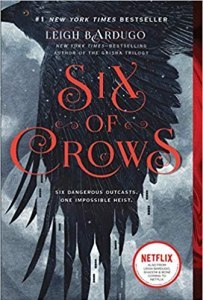
Despite everything she���d been through, Inej still believed her saints were watching over her. Kaz knew it, and for some reason he loved to rile her. He wished he could read her expression now. There was always something so satisfying about the little furrow between her black brows.
A character who enjoys teasing another, finding something ���satisfying��� about their face. Small details like these are all you need to drop a romantic hint and, again, to give readers something to look back on and think, ���ohhh.���
3. Give the Characters Something in CommonAs your characters��� relationship progresses, they���ll need something to bond over emotionally. Otherwise their attraction will be based on nothing but appearance, which doesn���t make for the most compelling romantic subplot.

The best way to foster this bond is by giving them something in common. This could be anything from a mutual friend or favorite TV show, to the same place of work. If you really want to solidify their emotional connection, make it a shared motivation or a dramatic event they go through together. Even if your characters are a case of ���opposites attract���, you should be able to find some thing for them to have in common.
Jodi Picoult, another author who excels at romantic subplots, is especially skilled at this. In many of her novels, the couple has some sort of history ��� having been childhood best friends, college exes, or people who worked together previously ��� and kindle (or rekindle) a romantic flame as they grow closer over the story. This dynamic works well if there���d been a possibility of romance in the past, but something like timing or another relationship got in the way.
That said, characters don���t need history to bond. In fact, another interesting approach is to have two characters who hardly know each other, and may even harbor mutual dislike��� until they discover the critical thing they have in common. This will cast them both in a new light and get them just a little closer to seeing what a good match they are.
4. Bring Them Together in a Vulnerable MomentWhen it���s time to kick your romance into high gear, you can���t go wrong with a dash of vulnerability. Whether physical, emotional, or both, having one character experience a vulnerable moment in front of the other ��� or having both be vulnerable together! ��� is often the perfect catalyst for characters who need to confront their feelings.
Indeed, this technique crops up in just about every romantic subplot ever written. Let���s return to one of my earlier titles: in Six of Crows, Kaz���s longtime haphephobia causes him to faint in front of Inej, but he begrudgingly admits that he trusts her to keep his condition a secret. Another one of my favorite vulnerable scenes comes from the first Hunger Games book, in which Katniss takes care of Peeta after she finds him terribly ill. (To be sure, well-plotted YA books like these are a hotbed for romantic subplot ideas.)
Of course, whether your characters act on their feelings at this juncture depends on their individual personalities and character arcs. Maybe they fall into each others��� arms immediately, or maybe it���s a wake-up call that isn���t quite big enough for them to get together. If one character is particularly stubborn, they might even push the other person away in the aftermath, determined not to rely on anyone.
But whatever follows, there should be no doubt in the reader���s mind that this is a significant scene ��� and that these two characters, no matter how much they deny it (or how busy they are with everything else in the story), are meant to help each other through tough times.
5. Don���t Overshadow the Main PlotWhile most of the tips here could apply to writing romance in general, this one is specifically for subplots: don���t get so carried away that the romance takes up more space than the main story. I speak from experience when I say it���s all too easy for romantic subplots to spiral out of control! After all, it���s much more fun to write scenes where your characters shamelessly flirt with each other than it is to progress the actual plot.
However, unless you want to turn your story into a bona fide romance, you���ll have to keep the banter to a minimum. Too much romance in a book that���s not actually a romance can throw off the pacing and distract readers ��� and besides, as noted above, less really is more when it comes to how you present it. When in doubt about whether you���re over-romancing the sauce, simply consider your ratios: if more than a third of what you���re writing is solely in service of a romantic subplot, you probably need to pull it back.
That���s not to say you shouldn���t have fun with it ��� quite the opposite! The more you, the author, enjoy writing a romantic subplot, the more that joy will shine through to create the same effect for your readers. And if you find that weaving such subplots is right up your alley, maybe you should try writing a romance novel of your own. Having taken this advice to heart (pun fully intended), you���ll be more than prepared to try.
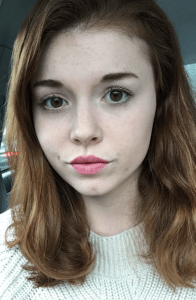
Savannah Cordova is a writer with��Reedsy, a marketplace that connects authors and publishers with the world���s best editors, designers, and marketers. In her spare time, Savannah enjoys reading contemporary fiction and writing short stories (and occasionally terrible novels).
The post 5 Tips for Writing Stellar Romantic Subplots appeared first on WRITERS HELPING WRITERS��.
February 9, 2021
Opening Scenes: 3 Critical Elements

One of the most common questions I get as an editor is, ���Am I starting my novel in the right place?��� Let���s discuss how you can craft an opening that subtly shows you are, in fact, starting in the right place and feel confident about your choice.
We often think we need to open with a huge bang, something that���ll catch the reader���s attention and play out like a blockbuster movie. But here���s the thing about those high-powered opening scenes: readers don���t care because they don���t yet know the characters or the baggage they bring onto page one. Readers don���t know what the events mean for the characters, or what���s at stake for them.
There���s no doubt it���s difficult to balance establishing the protagonist���s ordinary world, or before, while hooking readers. Ordinary world sounds boring, right?

But the trick to establishing your protagonist���s ordinary world and crafting a successful opening scene isn���t in impressing your reader as much as you think it is. The trick is in crafting an interesting event that somehow impresses your protagonist. To do that, we need enough of a glimpse of their before to understand how whatever happens toward the end of your opening will change their lives.
Think of your opening as having 3 parts:
Let us meet your protagonist. We need a clear understanding of who they are and what they believe about their world when we meet them. Preferably, this is done through interesting action and dialogue. Meaningful action that will reveal something about their current beliefs and personality. Think of protagonist Katniss in��The Hunger Games, waking up to find she���s alone in her bed when typically, her younger sister is beside her. Her immediate concern flares in the form of dialogue and action. We become acquainted with Katniss on a deep level before she steps foot into the arena, and all she���s done is wake up. No car chases. No mythical beings showing up. Just normality with an interesting twist.The primary external event toward the end of your opening scene leads to a noticeable turn. The ���turn������ or the “opportunity,” as it’s called in the One Stop for Writers’ Story Mapping tool���is the moment the opening���s main event impacts the protagonist and leads to a decision of some sort. In light of establishing your character���s ordinary world, your reader will better understand the context and meaning of this new event. So going back to The Hunger Games, the turn is when Katniss��� younger sister���s name is called to become a tribute in the games. It���s the moment that forces Katniss to make some sort of a decision. By then, we know Katniss��� primary goal is to protect her sister (ordinary world) and that this ���turn��� will force her hand. And because we felt Katniss��� reaction to feeling that cold spot in the bed where her sister should have been, the event of having her name called has context. We already know what Katniss cares about and why, which makes the event far more engaging.��The external event needs to have a clear impact on your character, but only in a way that shows who they currently are and that more than likely, they���re not ready yet for any remarkable changes. Maybe the protagonist is choosing to ignore what���s happening, or choosing to stay on the path they���ve been on since before we met them, or behaving in a way that reinforces who we���ve met so far. In The Hunger Games, Katniss makes a����decision to volunteer in place of her sister. It sounds dramatic, but this is actually not far-fetched based on what we know about her. She���s done something that reinforces the protectiveness she showed on page one. Here, you���ll want a reaction to establish your character���s reaction to events, but nothing so drastic that they seem to be changing already. There���s something going on in their lives that is new to��them, but they probably perceive their world as still being within their control.Take a look at your story���s opening and see if you���ve included these three components of a successful opening scene. Is there a particular aspect you find stands out strongly in your pages? Do any of these aspects need polishing? What other elements of a novel���s opening do you look for as both a writer and reader? Can you think of examples in books or film or TV that accomplish these three elements particularly well?
Happy crafting!
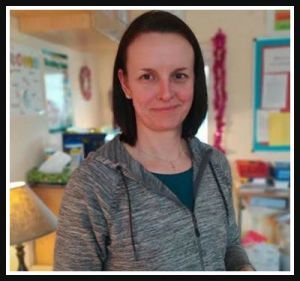 Marissa GraffResident Writing Coach
Marissa GraffResident Writing Coach
Marissa has been a freelance editor and reader for literary agent Sarah Davies at��Greenhouse Literary Agency��for over five years. In conjunction with��Angelella Editorial, she offers developmental editing, author coaching, and more. Marissa feels if she���s done her job well, a client should probably never need her help again because she���s given them a crash-course MFA via deep editorial support and/or coaching.
Website | Twitter | Instagram | Facebook
The post Opening Scenes: 3 Critical Elements appeared first on WRITERS HELPING WRITERS��.
Writers Helping Writers
- Angela Ackerman's profile
- 1014 followers



